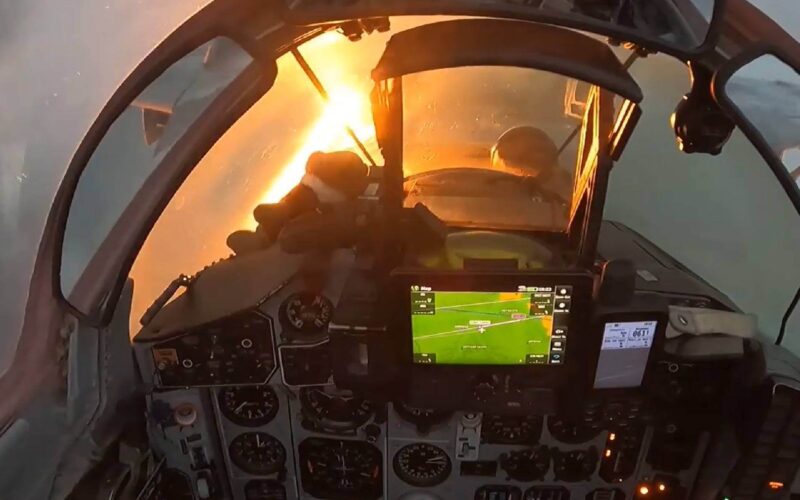The Ukrainian Air Force published a short video showing what appears to be a MiG-29 fighter jet firing a US-made AGM-88 HARM anti-radiation missiles.
The video was first posted on social media channels run by to the Air Force Command of the Ukrainian Armed Forces on August 30, 2022.
The video is one of the most detailed depictions of the operations of Ukrainian jets published since the start of Russia’s invasion of Ukraine. The footage depicts a Ukrainian pilot climbing into his MiG-29, taking off along with another MiG-29, launching several missiles and conducting maneuvers at both high and low altitude.
AGM-88 anti-radiation missiles, along with R-73 short-range air-to-air missiles, can be seen under the wings of the aircraft. During one moment in the video, the launch of the AGM-88 is clearly visible.
Whether Ukraine employs US-made anti-radiation missiles to attack Russian radars has long been a source of speculation. In early August, photographs showing fragments of such missiles began to circulate on Russian social media channels, followed by Ukrainian authorities confirming that they had received anti-radiation weaponry.
On August 8, the US Department of Defense confirmed that it had supplied AGM-88s to Ukraine. However, the question of how such missiles are being fired remained. Developed for Western aircraft, they were mostly used by American-made fighter jets, such as the F-16 fighting Falcon.
A report by The War Zone, citing an unnamed US defense official, alleged that Ukrainians managed to integrate AGM-88s to be fired from their MiG-29s. This claim has not been independently confirmed.
Evidence of AGM-88 strikes on Russian anti-aircraft systems continued through mid– and late-August, making it difficult to pinpoint exactly when the latest video was filmed.
One of the pilots has made a footage of the MiG-29 fighter jets combat operations.
pilot Ivan dedicates this video to major Yevhen Lysenko, his fallen brother in arms, who heroically died in an aerial fight against the invaders on March 9. pic.twitter.com/eUVYIAboDr
— Ukrainian Air Force (@KpsZSU) August 30, 2022
And a screenshot of an AGM-88 HARM being launched. 2/ pic.twitter.com/6qf08vX1AI
— Rob Lee (@RALee85) August 30, 2022
The AGM-88 HARM (High-speed Anti-Radiation Missile) was developed in the 1980s. It is designed to detect and home in on radio emissions, such as radars and jammers.
The missile has a range of up to 150 kilometers (80 miles) and a top speed of Mach 1.84. It has been extensively used by the US Air Force and Navy during various wars in the 1990s and 2000s and has also been exported to Israel and Italy.

